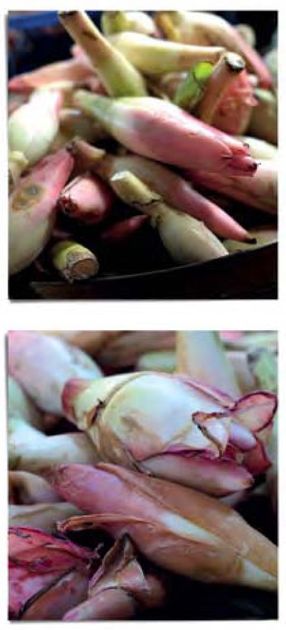🔥 Try our grilling cookbooks and save 25% on ckbk membership with code BBQ25 🔥
Torch Ginger
Combrang/Honje
Published 2016

Combrang, or some people prefer to call it, bunga kecombrang (torch ginger flower), may not immediately ring a bell among those familiar ingredients already listed. However, the ingredient, which goes by several names here is familiar enough to those looking for a rich and strong fragrance to balance spicy dishes, such as sambal bongkot from Bali, most Malaysian and Singaporean curries, and to accentuate the overall taste of nasi pecel from East Java.
The commonly used part of the plant is the flower, although the stalk of the plant, called rebung, can also be used to add flavor to dishes after undergoing some medium boiling process. The good combrang is a pointy pink at the top of the flower, with gradations of pink, white and light green going down to the bottom of the stalk, and culminating in a green end. The torch ginger has to be thinly sliced to ensure that the ingredient does not dominate the dish. Widely sold in traditional markets, it is sold with the whole stalk in paper or plastic packaging. Store this in a fridge for up to two weeks, before the intense flavor starts to disappear and the white part becomes yellowish.
Become a Premium Member to access this page
Unlimited, ad-free access to hundreds of the world’s best cookbooks
Over 160,000 recipes with thousands more added every month
Recommended by leading chefs and food writers
Powerful search filters to match your tastes
Create collections and add reviews or private notes to any recipe
Swipe to browse each cookbook from cover-to-cover
Manage your subscription via the My Membership page
Part of
Advertisement
Related Recipes
-
-
-
-
Related Reference
-
-
-
-
Advertisement



